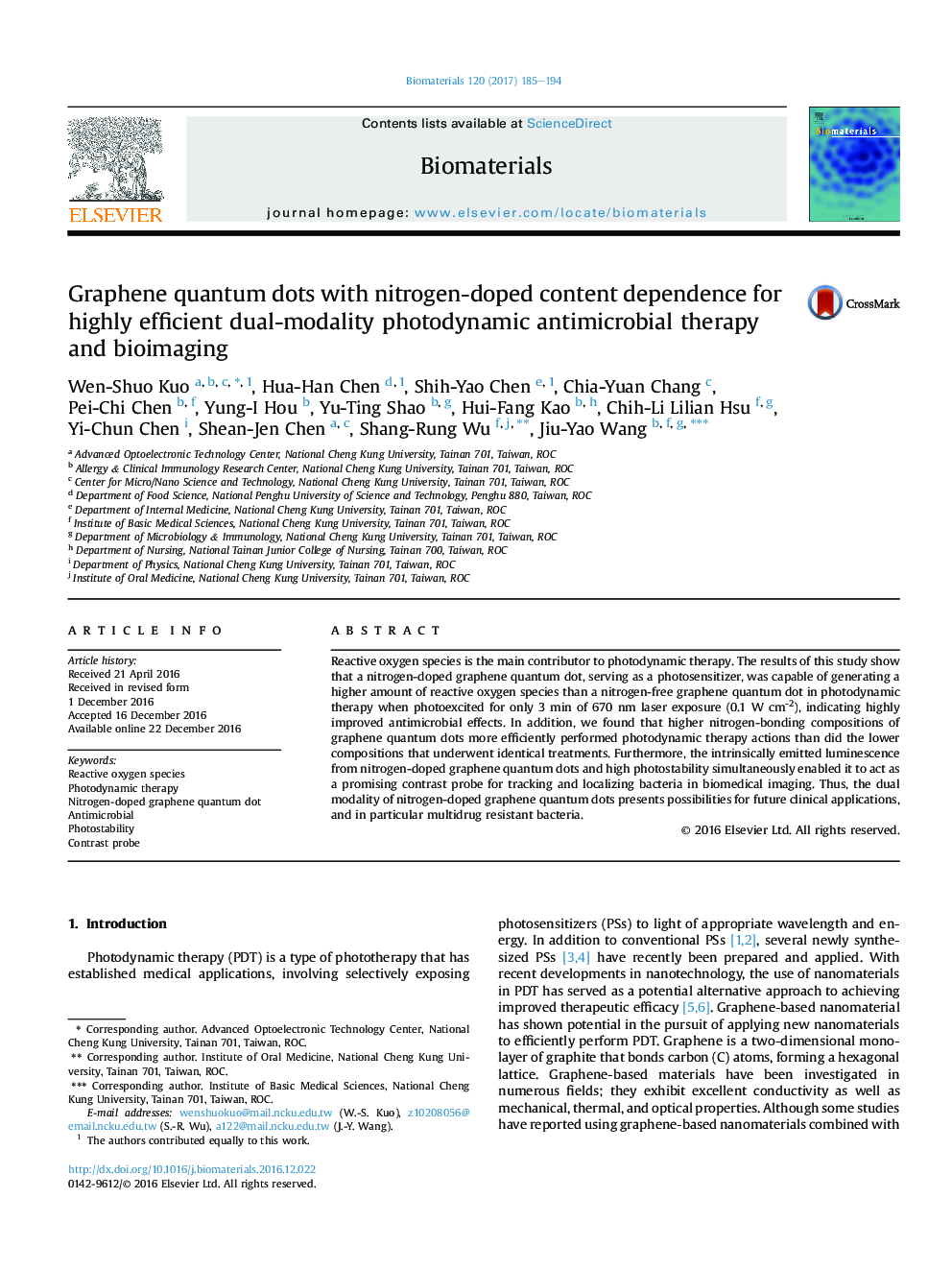| Article ID | Journal | Published Year | Pages | File Type |
|---|---|---|---|---|
| 6450818 | Biomaterials | 2017 | 10 Pages |
Reactive oxygen species is the main contributor to photodynamic therapy. The results of this study show that a nitrogen-doped graphene quantum dot, serving as a photosensitizer, was capable of generating a higher amount of reactive oxygen species than a nitrogen-free graphene quantum dot in photodynamic therapy when photoexcited for only 3Â min of 670Â nm laser exposure (0.1Â WÂ cm-2), indicating highly improved antimicrobial effects. In addition, we found that higher nitrogen-bonding compositions of graphene quantum dots more efficiently performed photodynamic therapy actions than did the lower compositions that underwent identical treatments. Furthermore, the intrinsically emitted luminescence from nitrogen-doped graphene quantum dots and high photostability simultaneously enabled it to act as a promising contrast probe for tracking and localizing bacteria in biomedical imaging. Thus, the dual modality of nitrogen-doped graphene quantum dots presents possibilities for future clinical applications, and in particular multidrug resistant bacteria.
